Span 33.5 cm / 13.2 in
Weight 19 g / 0.67 oz
The concept:
- small (peanut size)
- 4 in airscrew, thin brown rubber
- good flight characteristics
- low-wing monoplane
- distinctive design
- easy to build
- few parts
- rubber powered
Name: Parosh is Hebrew (פָּרוּשׁ) and means finch in English.
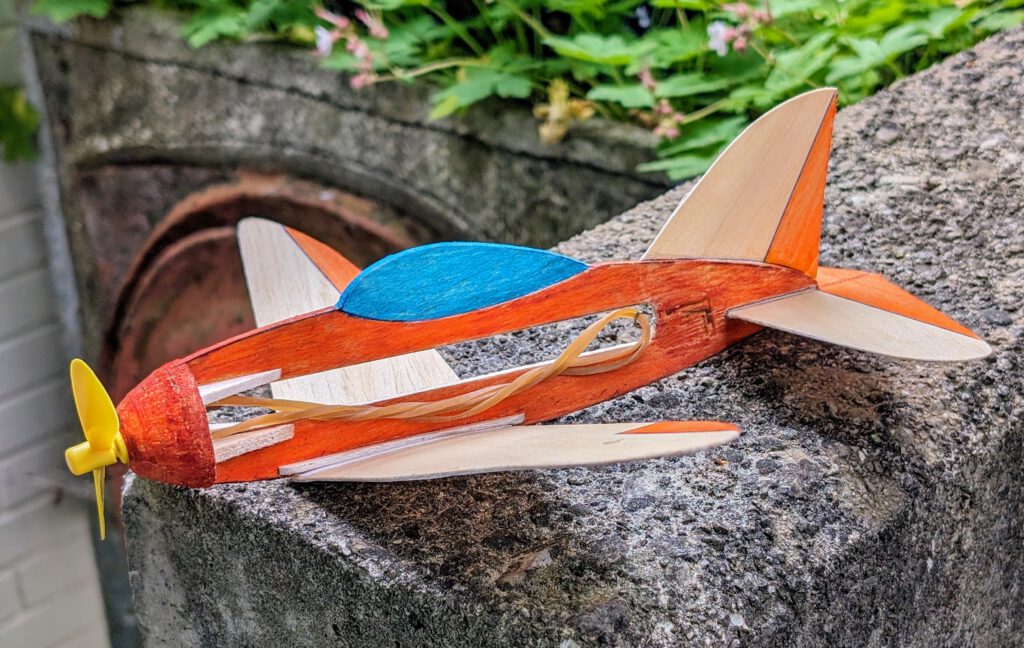
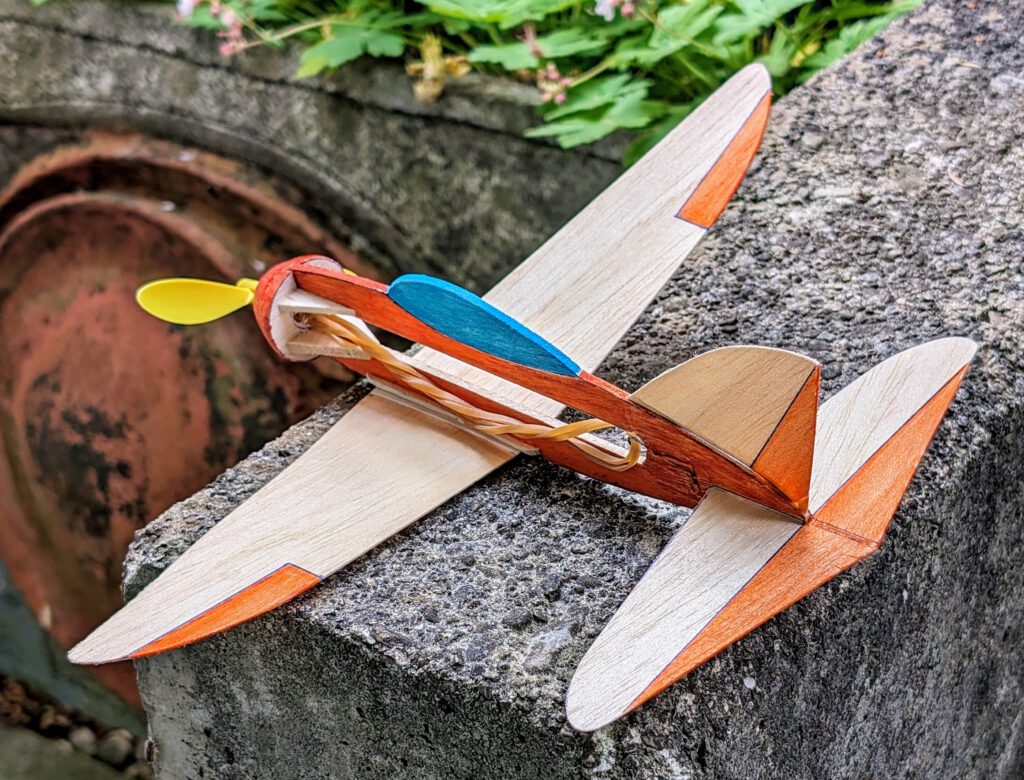
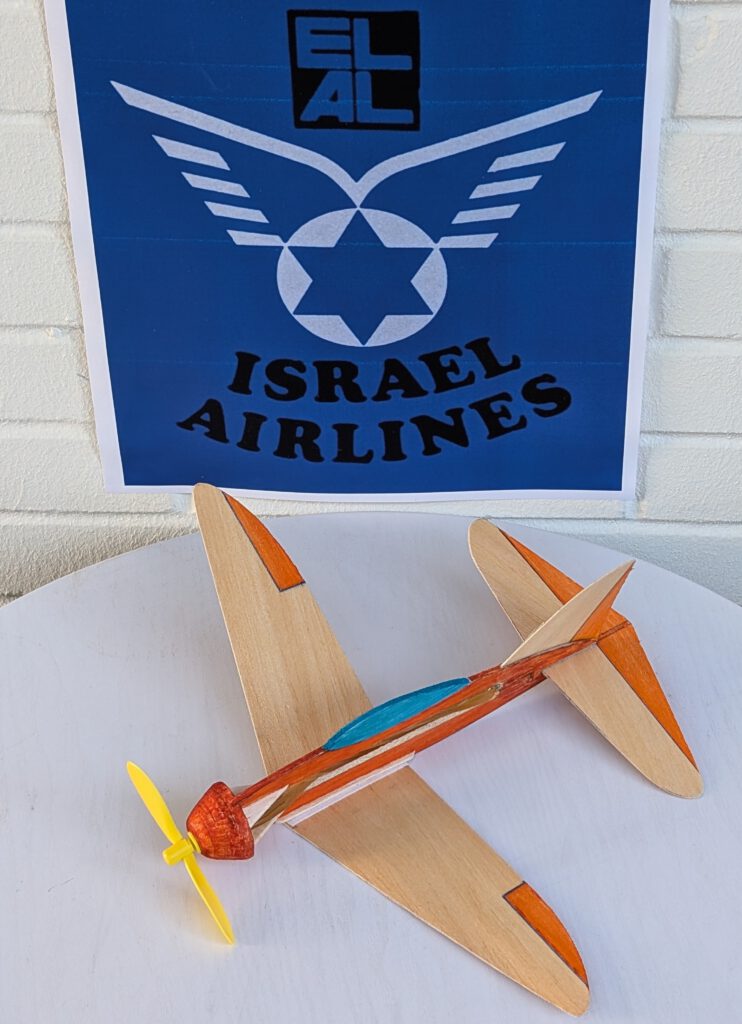
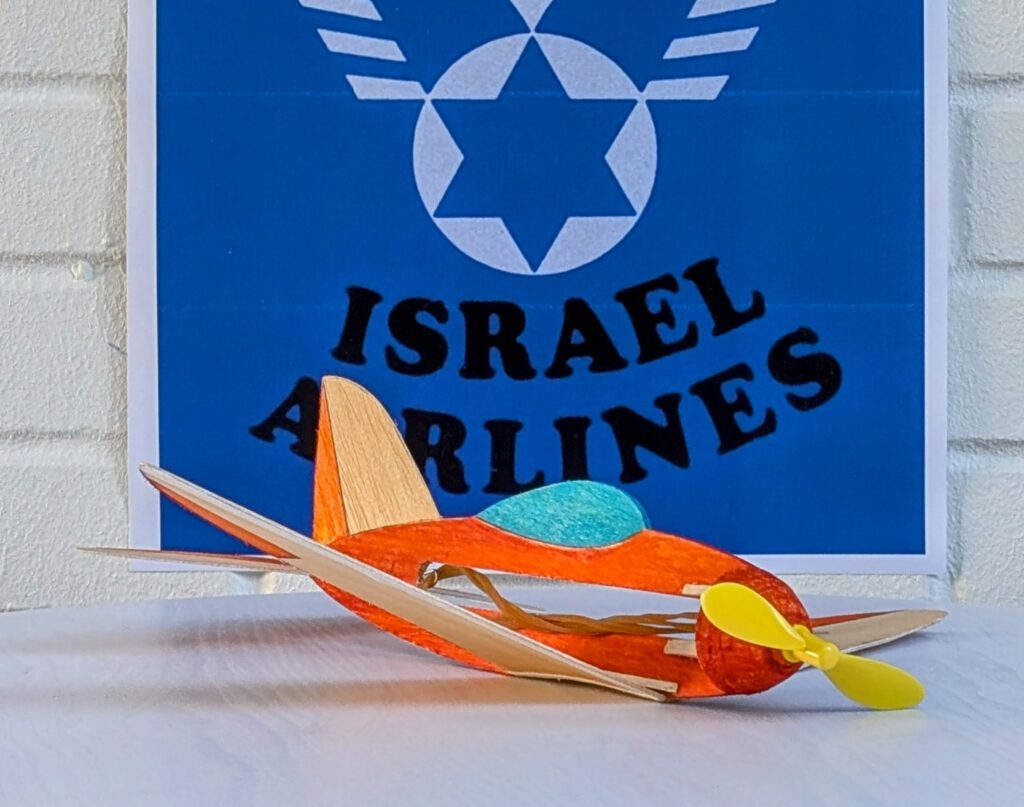
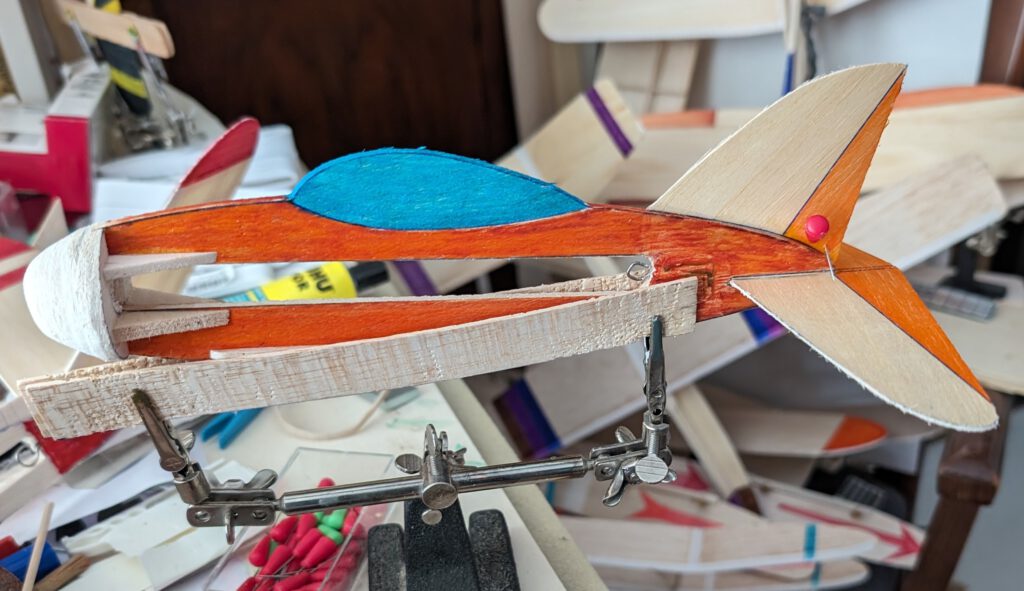
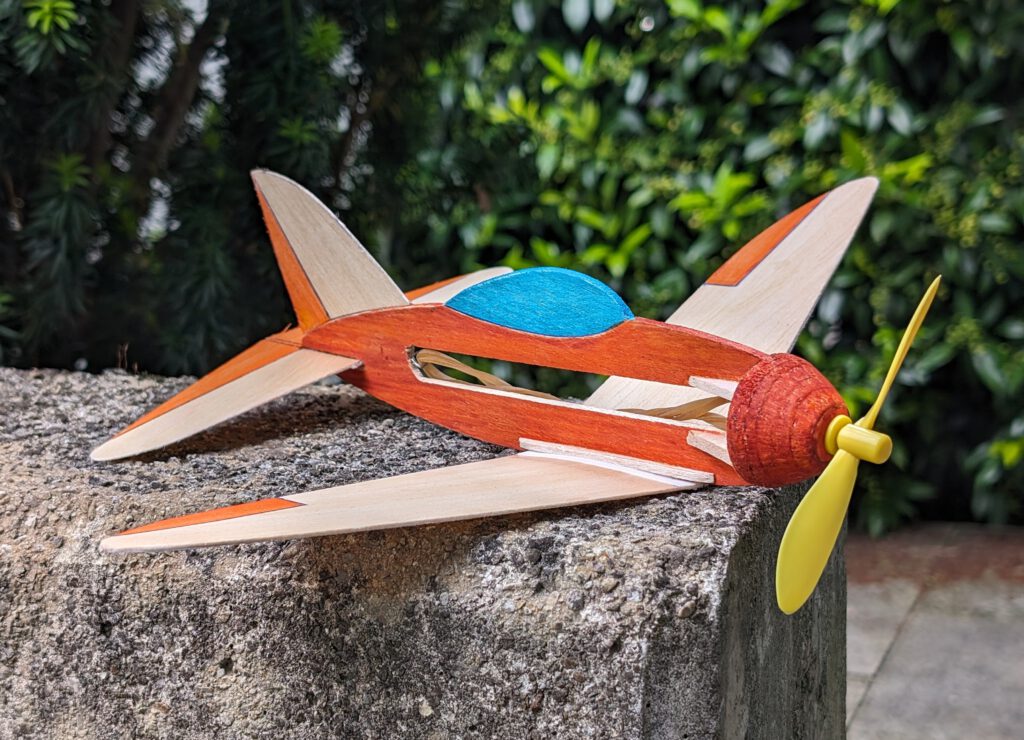
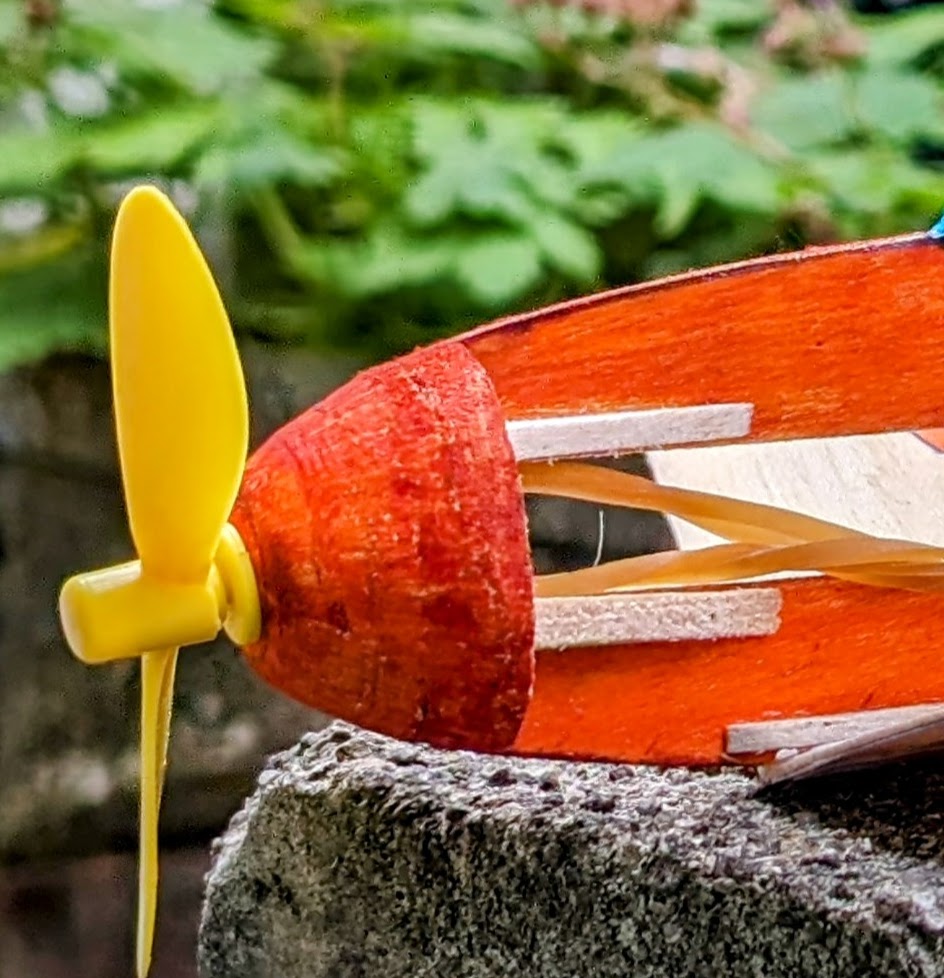
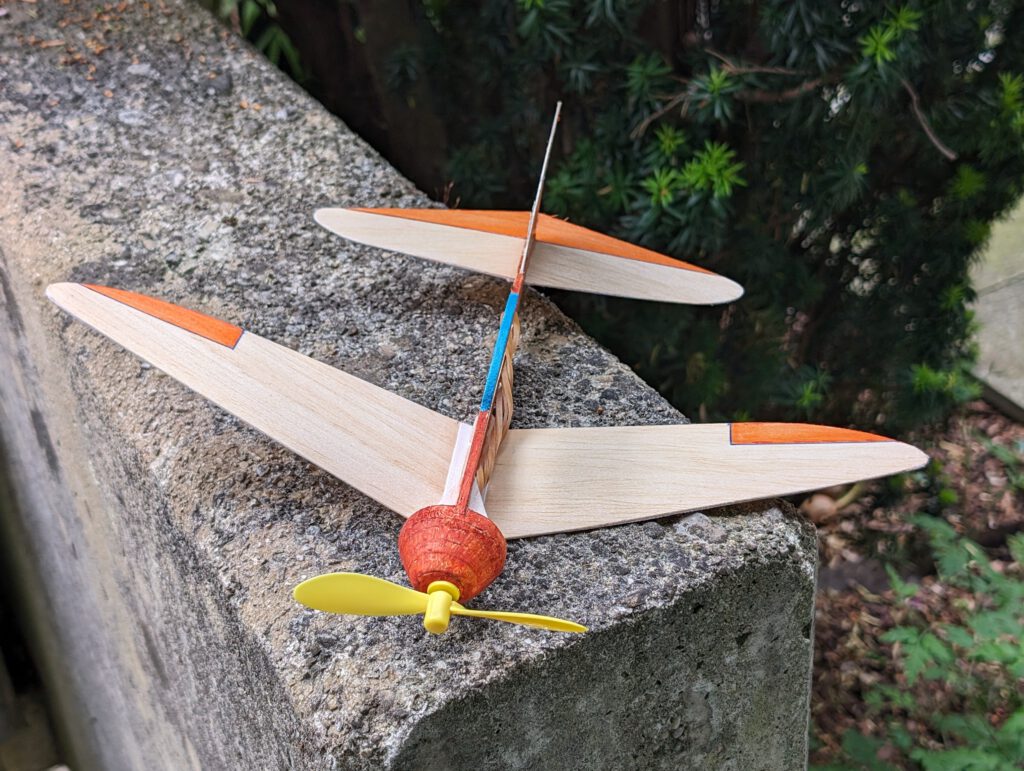
Building the rubber powered balsa profile-fuselage model Parosh.
Materials
Fuselage: B 3; nose stiffeners: B 3 or 5; fuselage nose parts: B 5; rubber hook: piano wire 1.2 or 1.5 mm diameter; wings: B 1; wing supports: B strips 3 x 3; horizontal stabilizer: B 0.8; fin: B 1; linen band width 10 mm / ½ in; ballast: small piece of scrap metal or lead; one commercial airscrew 4 in diameter; brown rubber.
Assembly:
Cut out balsa parts in accordance to plan. Sand well (photo). Transfer outlines of cabin, rudders, elevators, ec. from paper to wood with pen (photo).
Wing:
Wing consists of a right and a left wing half. Fix right wing half on building board with needles. Underlay left wing half tip in accordance to required dihedral. Join both halves and cover wing center area with linen band (photo). Let dry. If wing has the tendency to rest only on one side then it is too heavy on this side. To compensate the imbalance disperse a small amount of white wood glue on the opposite wing half’s tip area and let dry. Do it if necessary twice until balance is obtained.
Fuselage:
Bend as shown on plan piano wire into given hook shape. Carve out with knife and round file seat for rubber hook on left or right side of fuselage. Cement hook in place and cover hook area with linen band. Let dry. Cement fin on fuselage using needles to hold in place (photo). Always visual check twice that symmetry is obtained.
Cement B 5 nose parts one on the other as shown on plan and let dry. Sand well than treat this part with balsa putty. When dry sand again. May be this procedure has to be repeated. When the nose part is smooth (photo) you can start to carve out opening which will hold prop-bearing. Start from behind and do it not in a hurry. A little electric drill machine can be useful.
Cement nose on fuselage according to photos. When dry add triangle nose stiffeners two on each side (photo).
Empennage:
Cement horizontal stabilizer into given place using needles (photo). Visual check symmetry from all sides. Let dry.
Final Assembly:
Put fuselage on a so called “third hand” upside down. Cement wing on fuselage and wing supports using needles to hold in place. Doublecheck visually symmetry. Let dry.
Use a piece of lead or scrap metal to balance model if necessary. My model was balanced correctly without any ballast.
Remember correct center of gravity (CG) is essential for successful flights.
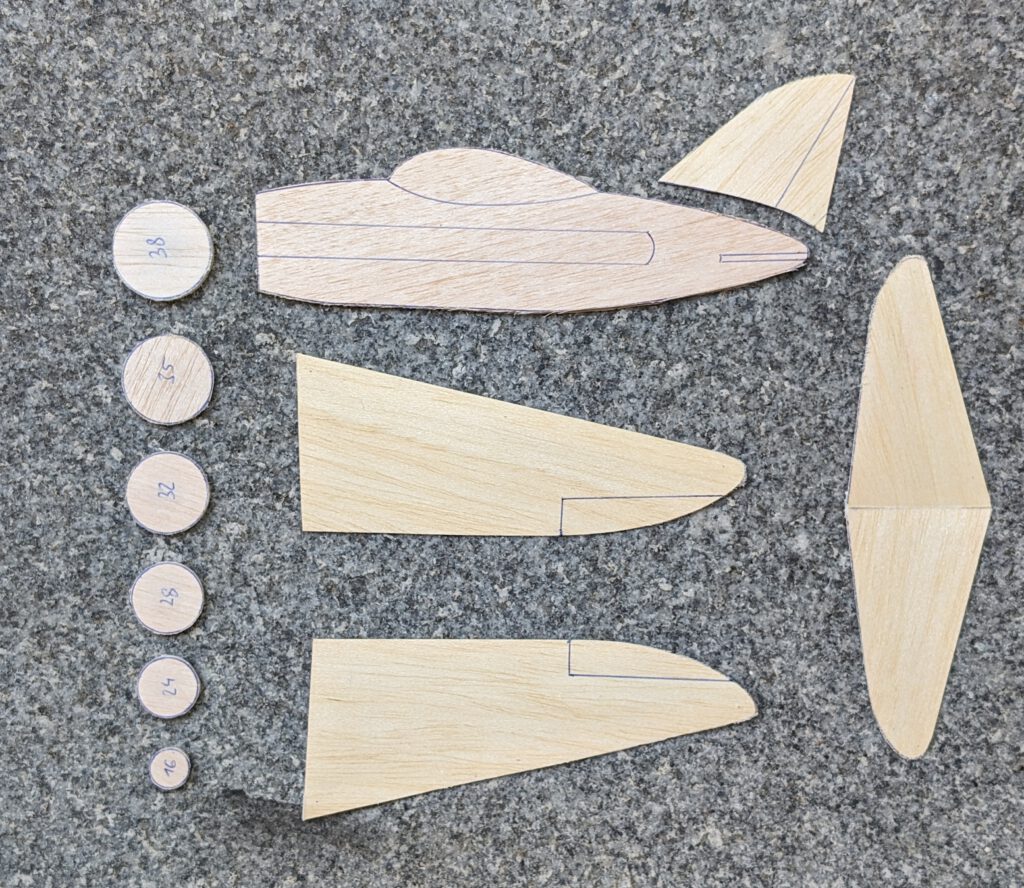
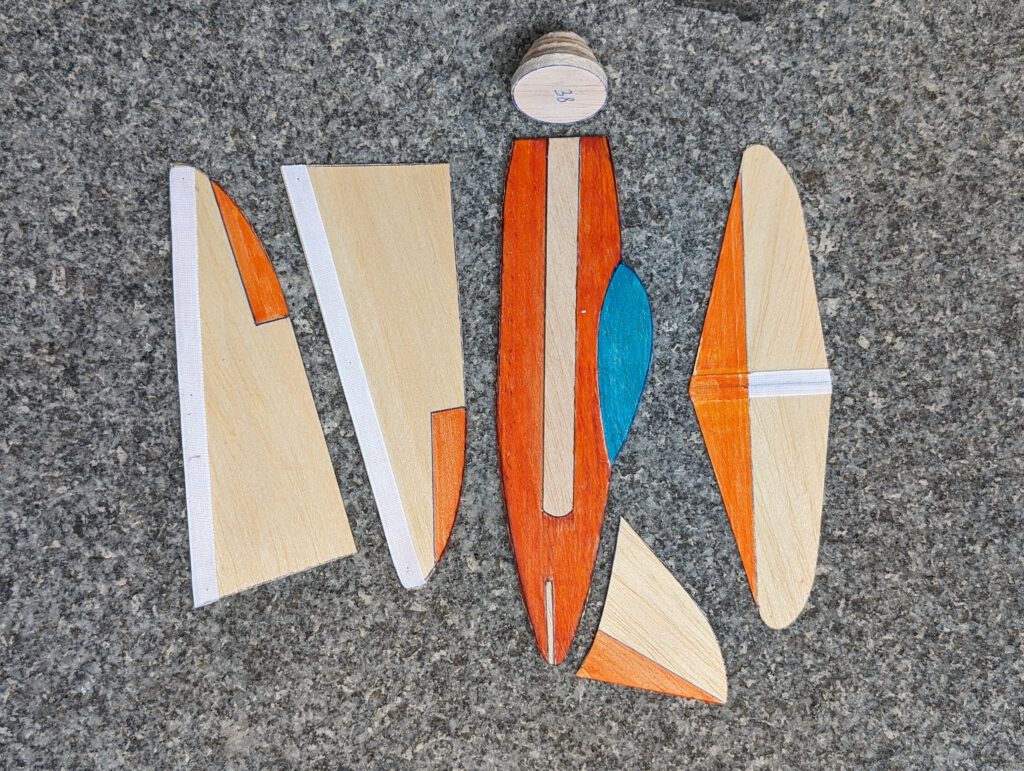
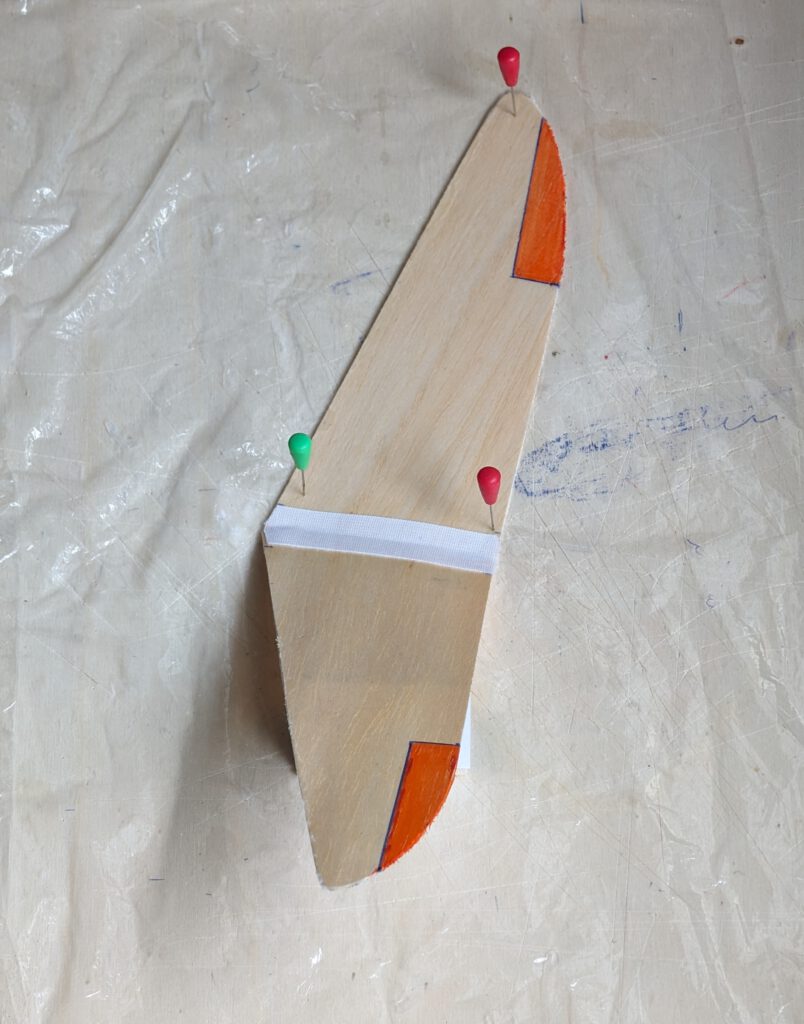
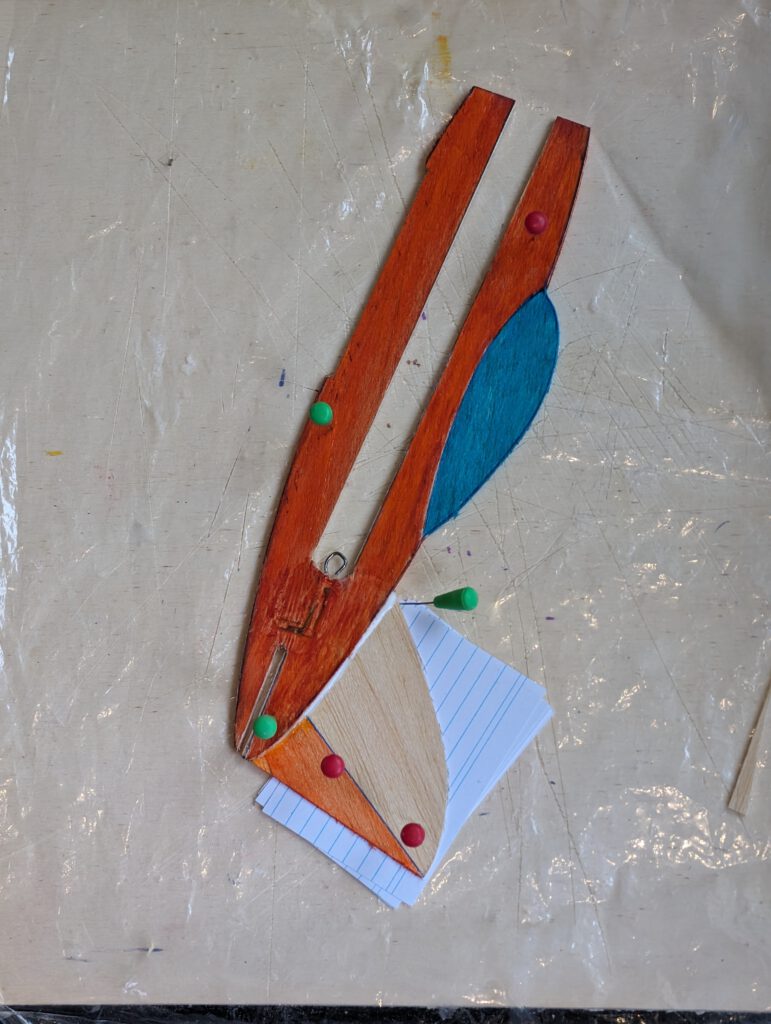
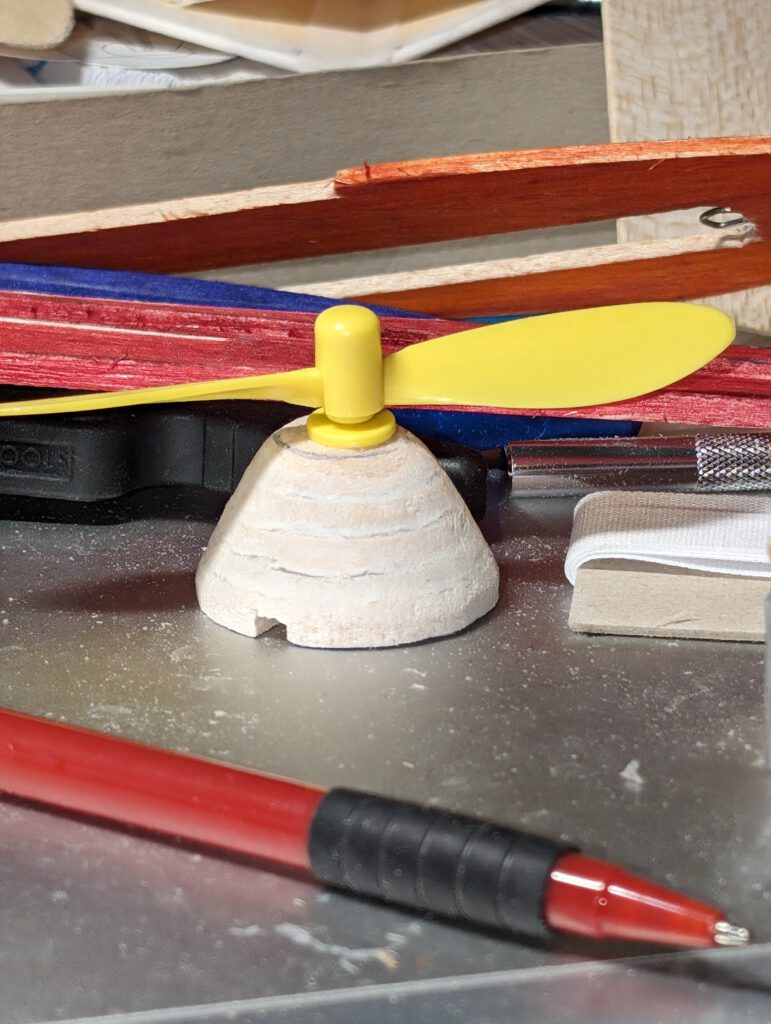
¡Muchos vuelos exitosos! (Ϻного успешни полети!)
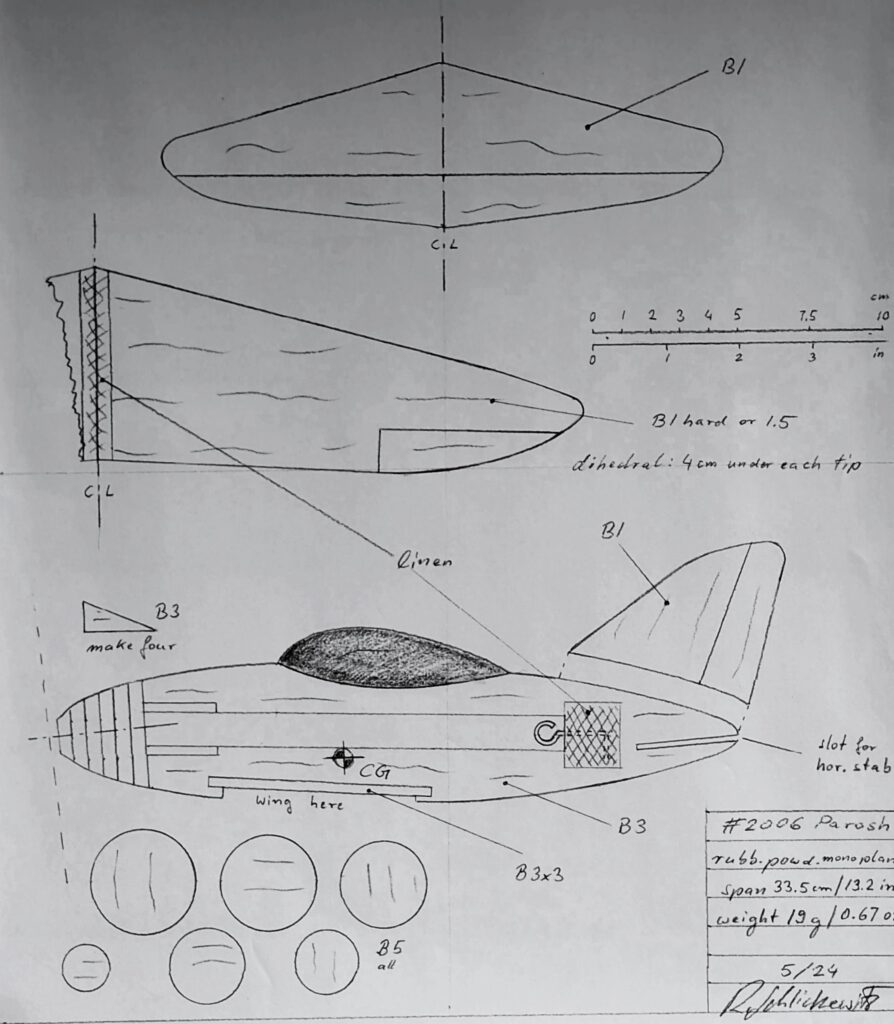
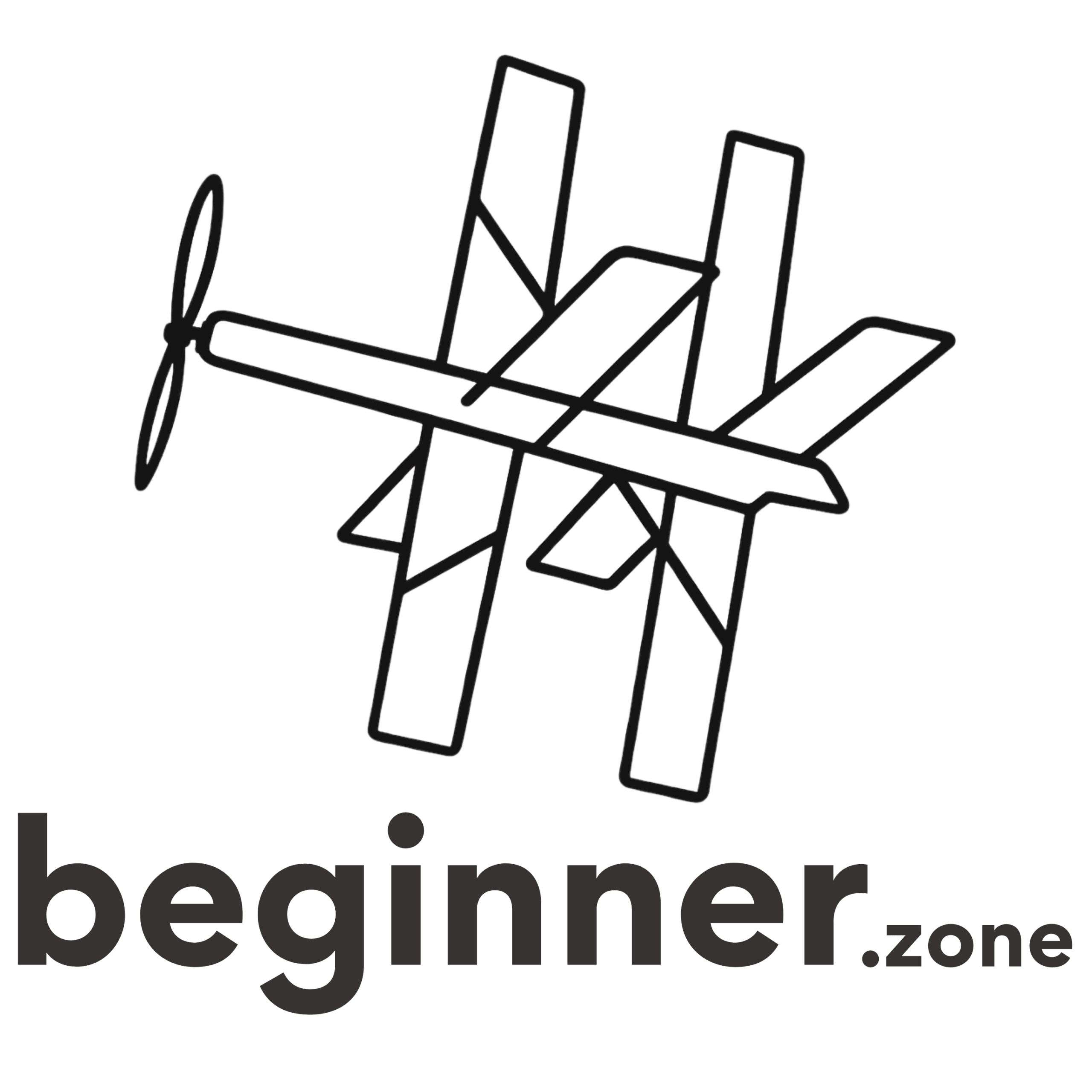
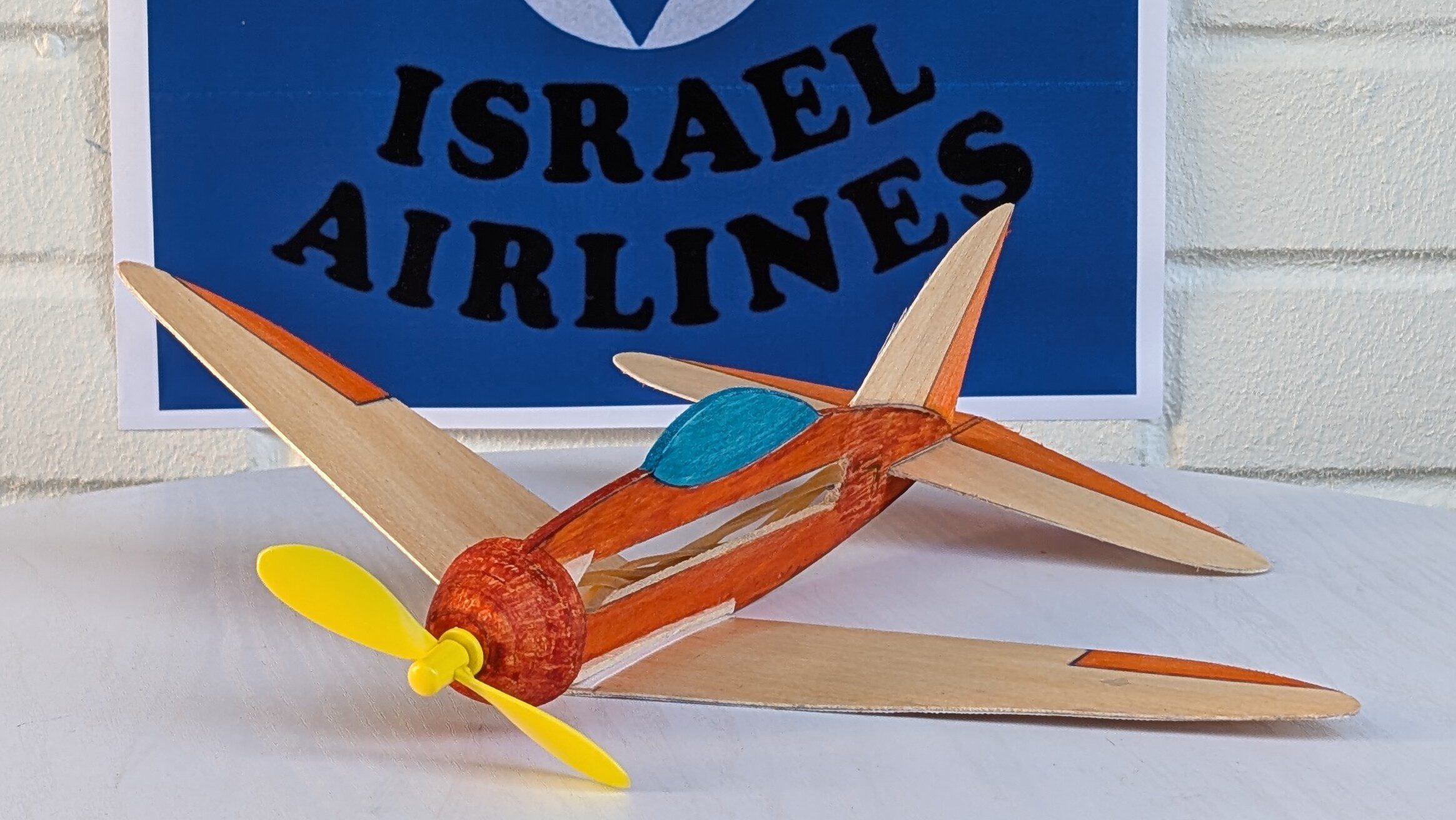
Leave a Reply